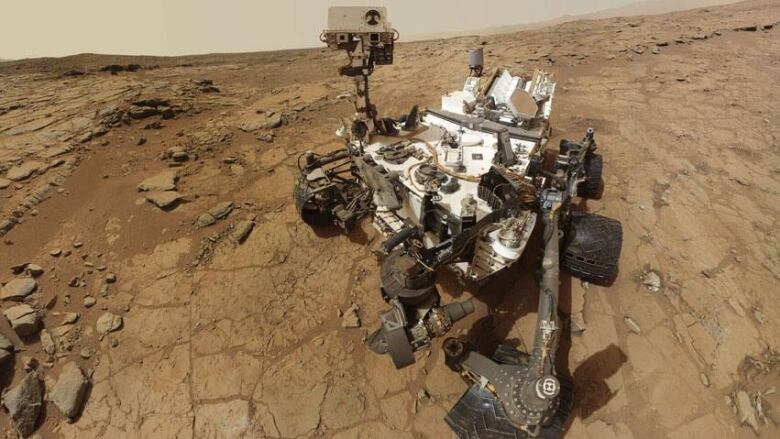Mars has no methane, Curiosity rover finds
Chance of finding methane-making microbes on Red Planet very low, study suggests

Methane, a gas considered to be potential sign of life, does not exist in the atmosphere of Mars, according to new data from the Curiosity rover that NASA called a surprise.
In a news releaseThursday, NASA saysthe results were unexpected because of the previous detection of methane in the atmosphere of Mars by other probes and telescopes.
The new findings reduce the probability of finding living, methane-making bacteria below the surface of Mars, says a new study published Thursday online in the journal Science Express.
The study, led by Christopher Webster, of the California Institute of Technology Jet Propulsion Laboratory, also calls into question controversial measurements of large amounts of methane by satellites orbiting Mars and plumes of methane in the Martian atmosphere measured by NASA scientists witha telescope from Earth in 2003. The estimated 19,000 tonnes of methane had nearly disappeared by 2006, leaving scientists stumped about how that happened.
There currently remains no accepted explanation for the existence and distribution of the reported plumes, nor of the apparent disappearance of methane over the last few years, wrote Webster and his team.
Rover instrument designed to measure methane
The new results are based on data collected on six occasions between October 2012 and June 2013 using atunable laser spectrometer, an instrument on the Curiosity roverspecially designed for measuring methane on Mars.
Average methane concentrations in the Mars atmosphere were found to be 0.18 parts per billion by volume essentially, zero. The researchers calculated that that means the maximum possible amount of methane in the Martian atmosphere today is 1.3 parts per billion about six times lower than measurements taken by by a variety of orbiters and telescopes in the past decade or so.
Scientists had been very interested in finding methane on Mars as a possible indication of life. On Earth, 90 to 95 per cent of the methane in the atmosphere has been produced by living organisms, both those alive today and those that lived millions of years ago, decomposing into fossil fuels such as methane.
Microbes on Mars still possible
Michael Meyer, NASAs lead scientist for Mars exploration, said the important new result would help direct efforts to examine the possibility of life on Mars.
He said the findingdidnt rule out the existence of microbial life on Mars, since many microbes on Earth dont generate methane.
The new study also suggests there is likely very little methane on Mars even from non-biological sources, such as comets or interplanetary dust.












_(720p).jpg)


 OFFICIAL HD MUSIC VIDEO.jpg)
.jpg)



























































































